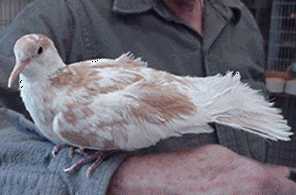
(©Dr Miller)
Peach Pied Silky
SILKY MUTANT
L//
The body of the Silky Dove is like any other of the Ringneck Dove varieties except there is a drastic difference in the feathering. The inner web of the feather is connected to the feather shaft, but the outer web is not, causing the "Silky" effect. The "silky" gene can be produced in any of the known colors, including PIED.
Silky is a co-dominant; breeding Silky to Silky parents have 25% normal feathered offspring, 50% Silky offspring, and 25% "extreme" or "super" Silky offspring (look like porcupines after several months age). You can usually tell if a youngster is Silky by 3 weeks of age, sometimes earlier.
The best breeding scenario is to always breed a "silky" to a normal feathered bird. A double silky gene causes "brittle feathering". "Double Silky" birds can fly no more then 1 foot off the ground. Further breeding of these "double silky gene" birds to another silky or double silky increases the brittleness and even baldness in offspring. Check out Dr Miller's web site for more information on this facet.

(©Dr Miller)
Peach Pied Silky
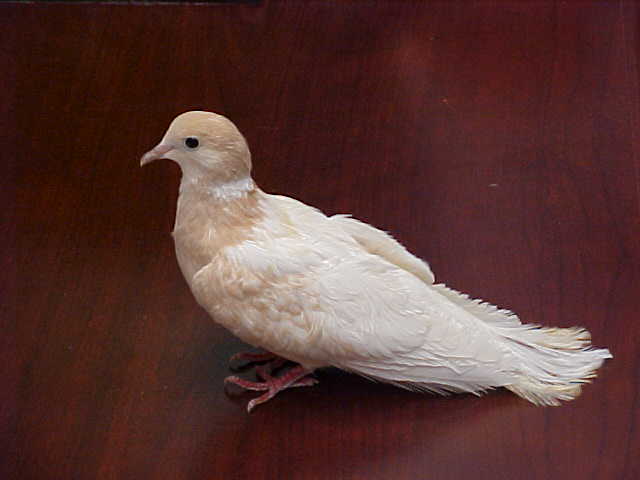
©Michael Pierce
Above & below pictures from Michael Pierce are of an Orange White-back Silky
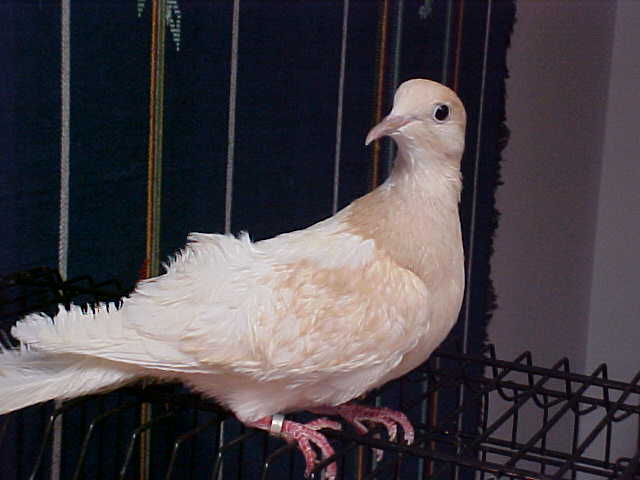
©Michael Pierce
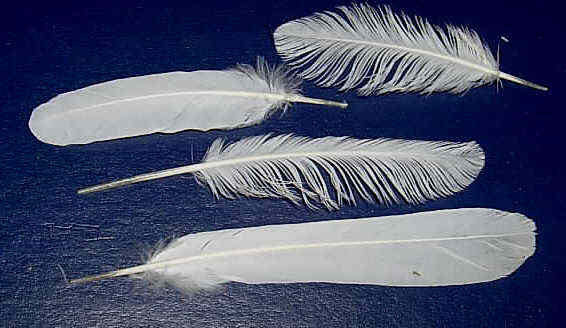
©MaryEllen Robinson
Feather Comparison - Silky & Normal
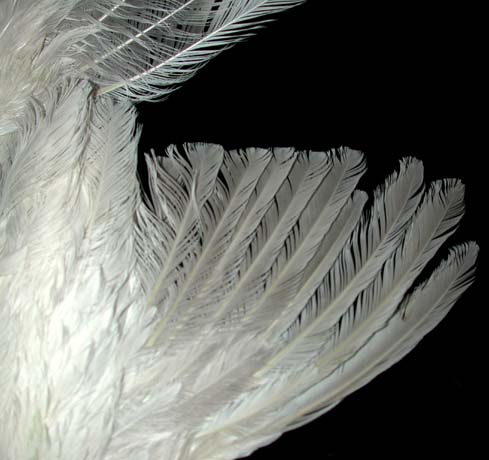
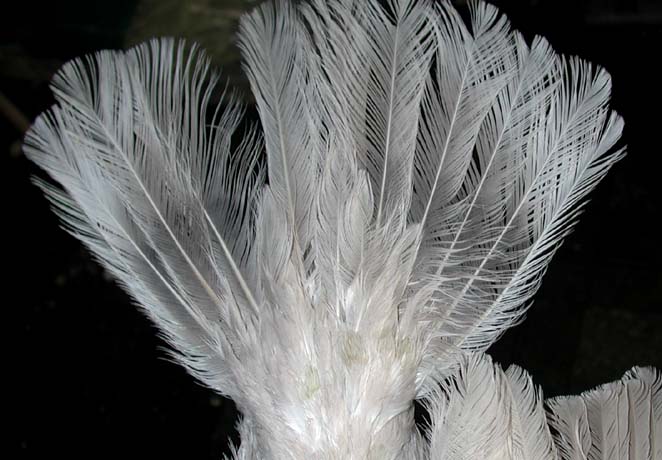
©Pet Doves
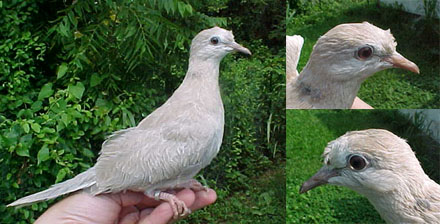
©Jeff Downing
Tufted Silky